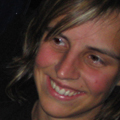Jonah Brucker-Cohen
 Jonah Brucker-Cohen is a researcher, artist, Ph.D. candidate, and HEA MMRP fellow in the Disruptive Design Team of the Networking and Telecommunications Research Group, Trinity College Dublin. He was a Research Fellow in the Human Connectedness Group at Media Lab Europe, received a Masters from NYU's Interactive Telecommunications Program and was an Interval Research Fellow. His work and thesis explores the theme of "Deconstructing Networks", including projects that critically challenge and subvert accepted perceptions of network interaction and experience. He co-founded the Dublin Art and Technology Association and was a recipient of the ARANEUM Prize sponsored by the Spanish Ministry of Art, Science and Technology and Fundacion ARCO. His writing has appeared in international publications including WIRED, Rhizome.org, and GIZMODO, and his work has been shown at events such as DEAF (03,04), SIGGRAPH (00, 05), UBICOMP (02,03,04), CHI (04, 06), Transmediale (02,04), ISEA (02,04), ICA (04), Whitney Museum of American Art (03), Ars Electronica (02,04), and the ZKM Museum of Contemporary Art (04).
Jonah Brucker-Cohen is a researcher, artist, Ph.D. candidate, and HEA MMRP fellow in the Disruptive Design Team of the Networking and Telecommunications Research Group, Trinity College Dublin. He was a Research Fellow in the Human Connectedness Group at Media Lab Europe, received a Masters from NYU's Interactive Telecommunications Program and was an Interval Research Fellow. His work and thesis explores the theme of "Deconstructing Networks", including projects that critically challenge and subvert accepted perceptions of network interaction and experience. He co-founded the Dublin Art and Technology Association and was a recipient of the ARANEUM Prize sponsored by the Spanish Ministry of Art, Science and Technology and Fundacion ARCO. His writing has appeared in international publications including WIRED, Rhizome.org, and GIZMODO, and his work has been shown at events such as DEAF (03,04), SIGGRAPH (00, 05), UBICOMP (02,03,04), CHI (04, 06), Transmediale (02,04), ISEA (02,04), ICA (04), Whitney Museum of American Art (03), Ars Electronica (02,04), and the ZKM Museum of Contemporary Art (04).
Blog: www.coin-operated.com
Projects and Work: www.coin-operated.com/projects
Richard Coyne
 Richard researches and teaches in the areas of information technology in practice, computer-aided design in architecture, the philosophy of information technology, multimedia in design, digital media, and design theory. He inaugurated the MSc in Design and Digital Media, in which he also teaches. He is author of several books on the implications of information technology and design with MIT Press and Routledge. His research has been supported by AHRC, EPSRC and SCRAN. Member of the AHRC review panel: Visual Arts and Media (practice, history and theory). Member of the RAE Architecture and Built Environment subpanel. Member of the editorial board of arq: Architectural Research Quarterly (pending). He is a registered architect (Australia), and previously worked at the University of Sydney and in Melbourne. Richard was Head of Department from 1999 to 2002 and is currently Director of the Graduate School of the School of Arts, Culture and Environment.
Richard researches and teaches in the areas of information technology in practice, computer-aided design in architecture, the philosophy of information technology, multimedia in design, digital media, and design theory. He inaugurated the MSc in Design and Digital Media, in which he also teaches. He is author of several books on the implications of information technology and design with MIT Press and Routledge. His research has been supported by AHRC, EPSRC and SCRAN. Member of the AHRC review panel: Visual Arts and Media (practice, history and theory). Member of the RAE Architecture and Built Environment subpanel. Member of the editorial board of arq: Architectural Research Quarterly (pending). He is a registered architect (Australia), and previously worked at the University of Sydney and in Melbourne. Richard was Head of Department from 1999 to 2002 and is currently Director of the Graduate School of the School of Arts, Culture and Environment.
ddm.caad.ed.ac.uk/~richard/
Michael Fox
 Michael Fox is a founder and principal of Fox Lin Inc. The partnership of Fox Lin combines the "sustainable" expertise of Juintow Lin with the "technological" expertise of Michael Fox to formulate a truly optimistic outlook on the integration of technology and architecture. Integrating kinetics and embedded technologies with building design, the office has designed a number of projects that are utterly flexible buildings, landscapes and objects that can be easily transformed to meet a diversity of uses and human needs. In 1998, Fox founded the Kinetic Design Group at MIT as a sponsored research group to investigate interactive architecture. Fox directed the group for three years. And in 2001, Fox founded Odesco (Ocean Design Collaborative) in Los Angeles, California from which the office of Fox Lin has evolved. Michael has lectured internationally on the subject matter of interactive, behavioral and kinetic architecture. He has won numerous awards in architectural ideas competitions and his masters’ thesis at MIT received the outstanding thesis award for his work on computation and design processes. Fox’s work has been featured in numerous international periodicals and books, and has been exhibited worldwide. His practice, teaching and research is centered on interactive architecture. Prior to founding OdescO, Fox worked with engineer and inventor Chuck Hoberman in New York, and as a design team leader for Kitamura Associates in Tokyo, Japan. He currently lives in Los Angeles and is an assistant Professor of Architecture at Cal Poly Pomona. Fox has taught on the subject matter of interactive, behavioral and kinetic architecture at MIT, The Hong Polytechnic University, the Art Center College of Design in Pasadena and Southern California Institute of Architecture (SCI_ARC) in Los Angeles.
Michael Fox is a founder and principal of Fox Lin Inc. The partnership of Fox Lin combines the "sustainable" expertise of Juintow Lin with the "technological" expertise of Michael Fox to formulate a truly optimistic outlook on the integration of technology and architecture. Integrating kinetics and embedded technologies with building design, the office has designed a number of projects that are utterly flexible buildings, landscapes and objects that can be easily transformed to meet a diversity of uses and human needs. In 1998, Fox founded the Kinetic Design Group at MIT as a sponsored research group to investigate interactive architecture. Fox directed the group for three years. And in 2001, Fox founded Odesco (Ocean Design Collaborative) in Los Angeles, California from which the office of Fox Lin has evolved. Michael has lectured internationally on the subject matter of interactive, behavioral and kinetic architecture. He has won numerous awards in architectural ideas competitions and his masters’ thesis at MIT received the outstanding thesis award for his work on computation and design processes. Fox’s work has been featured in numerous international periodicals and books, and has been exhibited worldwide. His practice, teaching and research is centered on interactive architecture. Prior to founding OdescO, Fox worked with engineer and inventor Chuck Hoberman in New York, and as a design team leader for Kitamura Associates in Tokyo, Japan. He currently lives in Los Angeles and is an assistant Professor of Architecture at Cal Poly Pomona. Fox has taught on the subject matter of interactive, behavioral and kinetic architecture at MIT, The Hong Polytechnic University, the Art Center College of Design in Pasadena and Southern California Institute of Architecture (SCI_ARC) in Los Angeles.
www.foxlin.com
www.robotecture.com
Karmen Franinovic
 Karmen Franinovic is the director of Zero-Th Association. She pursues academic research at University of Applied Arts and Sciences in Zurich. In her work, Karmen focuses on the critical and creative use of interactive technology in architecture, public space and everyday life. She seeks in her work to stimulate social and bodily interaction by means of physical and intangible spatial structures, and thereby to raise awareness of the surroundings and its diverse ecologies. Karmen worked as an architect and interaction designer in Italy and Germany, and exhibited her work in venues such as Ircam/Centre Pompidou, UbiComp2005 Tokyo, DEAF2003, Museum of Modern Art Ljubljana and ACM Designing Interactive Systems.
Karmen Franinovic is the director of Zero-Th Association. She pursues academic research at University of Applied Arts and Sciences in Zurich. In her work, Karmen focuses on the critical and creative use of interactive technology in architecture, public space and everyday life. She seeks in her work to stimulate social and bodily interaction by means of physical and intangible spatial structures, and thereby to raise awareness of the surroundings and its diverse ecologies. Karmen worked as an architect and interaction designer in Italy and Germany, and exhibited her work in venues such as Ircam/Centre Pompidou, UbiComp2005 Tokyo, DEAF2003, Museum of Modern Art Ljubljana and ACM Designing Interactive Systems.
www.zero-th.org
Anne Galloway
 Anne Galloway is a social researcher working at the intersection of technology, space and culture. A lecturer and SSHRC Doctoral Fellow in Anthropology and Sociology at Carleton University in Ottawa, Canada, Anne is currently in the final stages of completing her PhD on the social and cultural dimensions of mobility, and the design of mobile and pervasive technologies for urban public spaces. Anne's research has been presented to international audiences in technology, design, art, architecture, social and cultural studies, and her work has been published in academic journals and industry magazines, as well as discussed in popular newspapers. When not pursuing her own research, Anne enjoys teaching undergraduate courses in critical cultural theory and social studies of science and technology. In her spare time Anne can be found hanging out with her cat and reading Love & Rockets comics.
Anne Galloway is a social researcher working at the intersection of technology, space and culture. A lecturer and SSHRC Doctoral Fellow in Anthropology and Sociology at Carleton University in Ottawa, Canada, Anne is currently in the final stages of completing her PhD on the social and cultural dimensions of mobility, and the design of mobile and pervasive technologies for urban public spaces. Anne's research has been presented to international audiences in technology, design, art, architecture, social and cultural studies, and her work has been published in academic journals and industry magazines, as well as discussed in popular newspapers. When not pursuing her own research, Anne enjoys teaching undergraduate courses in critical cultural theory and social studies of science and technology. In her spare time Anne can be found hanging out with her cat and reading Love & Rockets comics.
www.purselipsquarejaw.org
www.spaceandculture.org
Charlie Gere
 Charlie Gere is Reader in New Media Research at the Institute for Cultural Research, Lancaster University. He has an MA in Computer Art and Design and a PhD looking at new means of representing artifacts made possible by new technologies and media. He is the chair of Computers and the History of Art (CHArt) and was director of the Computer Arts, Histories, Contexts, etc... (CACHe) project which ran from 2002 - 5, and which was concerned with the history of early British computer art. He is the author of Digital Culture (Reaktion, 2002), Art, Time and Technology (Berg, 2006), co-editor of White Heat, Cold Logic (forthcoming, MIT, 2008) as well as many articles and papers on aspects of the relation between new media and culture. He lives in a village in North Yorkshire with his family.
Charlie Gere is Reader in New Media Research at the Institute for Cultural Research, Lancaster University. He has an MA in Computer Art and Design and a PhD looking at new means of representing artifacts made possible by new technologies and media. He is the chair of Computers and the History of Art (CHArt) and was director of the Computer Arts, Histories, Contexts, etc... (CACHe) project which ran from 2002 - 5, and which was concerned with the history of early British computer art. He is the author of Digital Culture (Reaktion, 2002), Art, Time and Technology (Berg, 2006), co-editor of White Heat, Cold Logic (forthcoming, MIT, 2008) as well as many articles and papers on aspects of the relation between new media and culture. He lives in a village in North Yorkshire with his family.
www.lancs.ac.uk/fss/cultres/staff/gere.php
Usman Haque
Usman Haque, director Haque Design + Research, is an architect specialising in responsive environments, interactive installations, digital interface devices and choreographed performances. His skills include the design of both physical spaces and the software and systems that bring them to life. He has been an invited researcher at the Interaction Design Institute Ivrea, Italy, artist-in-residence at the International Academy of Media Arts and Sciences, Japan and has also worked in USA, UK and Malaysia. As well as directing the work of Haque Design + Research he has also taught in the Interactive Architecture Workshop at the Bartlett School of Architecture, London. He is a recipient of a Wellcome Trust Sciart Award, a grant from the Daniel Langlois Foundation for Art, Science and Technology, the Swiss Creation Prize, Belluard Bollwerk International, the Japan Media Arts Festival Excellence prize and the Grand Prize Asia Digital Art Award. His work has appeared at the Institute of Contemporary Arts (London), Ars Electronica, Transmediale, Hillside Gallery (Tokyo), The National Maritime Museum Greenwich and the Tokyo Metropolitan Museum of Photography. His work has also been presented at international conferences including Siggraph, VSMM (International Society on Virtual Systems and Multimedia), Art Futura and Doors of Perception. Haque Design + Research specialises in the design and research of interactive architecture systems. Architecture is no longer considered something static and immutable; instead it is seen as dynamic, responsive and conversant.
www.haque.co.uk
Peter Hasdell
 Peter Hasdell is an Architect and Academic. He studied film theory and computer engineering before graduating in Architecture from University of Sydney. Post-graduate studies completed at the Architectural Association (London), PhD in process in Stockholm. He has worked as an architect and artist on both theoretical and actual projects in a number of countries for 16 years. He has taught architecture, design and technology in Europe and North America, and has held positions at the Bartlett School London (UCL), The Berlage Institute in Amsterdam and at KTH Architecture School in Stockholm. His academic work has included research, lecturing and teaching at various institutions in different countries at undergraduate level, postgraduate level and post professional level. In Stockholm he was recently Associate Professor / programme founder / director of the innovative research studio Architecture and Urban Research Laboratory investigating the mediated city, urban scale metabolic systems and artificial ecologies. He is currently Professor of Architectural Technology at the University of Manitoba. His research work presently investigates metabolic systems and interactive technologies with a focus on ‘artificial ecologies’ and issues of sustainability. He has been a member of various research institutes including Chora Institute of Urbanism and Architecture in London.
Peter Hasdell is an Architect and Academic. He studied film theory and computer engineering before graduating in Architecture from University of Sydney. Post-graduate studies completed at the Architectural Association (London), PhD in process in Stockholm. He has worked as an architect and artist on both theoretical and actual projects in a number of countries for 16 years. He has taught architecture, design and technology in Europe and North America, and has held positions at the Bartlett School London (UCL), The Berlage Institute in Amsterdam and at KTH Architecture School in Stockholm. His academic work has included research, lecturing and teaching at various institutions in different countries at undergraduate level, postgraduate level and post professional level. In Stockholm he was recently Associate Professor / programme founder / director of the innovative research studio Architecture and Urban Research Laboratory investigating the mediated city, urban scale metabolic systems and artificial ecologies. He is currently Professor of Architectural Technology at the University of Manitoba. His research work presently investigates metabolic systems and interactive technologies with a focus on ‘artificial ecologies’ and issues of sustainability. He has been a member of various research institutes including Chora Institute of Urbanism and Architecture in London.
www.arch.kth.se/a-url/interspace.htm
www.arch.kth.se/a-url/description.htm
www.bartlett.ucl.ac.uk/architecture/programmes/units/unit24.htm
Natalie Jeremijenko
 Natalie Jeremijenko is an Assistant Professor in the Department of Visual Arts at the University of California, San Diego, and a New York University Global Distinguished Professor. A new media artist who works at the intersection of contemporary art, science, and engineering, her work takes the form of large-scale public art works, tangible media installations, single channel tapes, and critical writing. She investigates the theme of the transformative potential of new technologies - particularly information technologies. She has recently held positions of on the faculty of Engineering at Yale; research scientist at the Advanced Computer Graphics Center/Media Research Lab, Department of Computer Science, at NYU; and Distinguished Visiting Critic in the Department of Art, Virginia Commonwealth University. In recognition of her achievements, she has received awards and grants from agencies including the Rockefeller Foundation and the National Academy of Science. Natalie's work has been exhibited and screened internationally including the recent Whitney Biennial. She is represented by postmasters Gallery and the Lavin speaking agency.
Natalie Jeremijenko is an Assistant Professor in the Department of Visual Arts at the University of California, San Diego, and a New York University Global Distinguished Professor. A new media artist who works at the intersection of contemporary art, science, and engineering, her work takes the form of large-scale public art works, tangible media installations, single channel tapes, and critical writing. She investigates the theme of the transformative potential of new technologies - particularly information technologies. She has recently held positions of on the faculty of Engineering at Yale; research scientist at the Advanced Computer Graphics Center/Media Research Lab, Department of Computer Science, at NYU; and Distinguished Visiting Critic in the Department of Art, Virginia Commonwealth University. In recognition of her achievements, she has received awards and grants from agencies including the Rockefeller Foundation and the National Academy of Science. Natalie's work has been exhibited and screened internationally including the recent Whitney Biennial. She is represented by postmasters Gallery and the Lavin speaking agency.
xdesign.ucsd.edu
www.onetrees.org
www.howstuffismade.org
www.bureauit.org
Sheila Kennedy
 Kennedy & Violich Architecture has received national recognition for the firm’s research and built work including grants from the National Endowment for the Arts, the New England Foundation for the Arts, the Massachusetts Cultural Council and the LEF Foundation. The design work of Kennedy & Violich has received an Interdisciplinary Award from Progressive Architecture, two National AIA Honor Awards for Design Excellence, and two regional AIA Honor Awards for Design Excellence in Art and Architecture Collaboration. The work of Kennedy & Violich Architecture has been published internationally in journals of architecture, as well as Art in America, Time Magazine, The Wall Street Journal and The New York Times. Recent projects by Kennedy & Violich will appear in the Spring of 2000 including Ten by Ten, from Phaidon Press, London and Material Misuse which will be published by the Architectural Association of London. The design work of Kennedy & Violich has been exhibited at the San Francisco Museum of Modern Art, the Museum of Modern Art in New York, the Architectural League of New York, Gallery for Contemporary Arts, and the Wexner Center for Contemporary Art in Ohio.
Kennedy & Violich Architecture has received national recognition for the firm’s research and built work including grants from the National Endowment for the Arts, the New England Foundation for the Arts, the Massachusetts Cultural Council and the LEF Foundation. The design work of Kennedy & Violich has received an Interdisciplinary Award from Progressive Architecture, two National AIA Honor Awards for Design Excellence, and two regional AIA Honor Awards for Design Excellence in Art and Architecture Collaboration. The work of Kennedy & Violich Architecture has been published internationally in journals of architecture, as well as Art in America, Time Magazine, The Wall Street Journal and The New York Times. Recent projects by Kennedy & Violich will appear in the Spring of 2000 including Ten by Ten, from Phaidon Press, London and Material Misuse which will be published by the Architectural Association of London. The design work of Kennedy & Violich has been exhibited at the San Francisco Museum of Modern Art, the Museum of Modern Art in New York, the Architectural League of New York, Gallery for Contemporary Arts, and the Wexner Center for Contemporary Art in Ohio.
www.kvarch.net
Eric Paulos
 Eric Paulos is a Research Scientist at Intel in Berkeley, California where he leads the Urban Atmospheres project – challenged to use provocative methods to understand the future fabric of our emerging digital and wireless urban landscape. Eric received his PhD in Electrical Engineering and Computer Science from the University of California, Berkeley where he researched scientific, and social issues surrounding internet based telepresence, robotics, and mediated communication tools. Eric has developed several internet based tele-operated robots including, Mechanical Gaze in 1995 and Personal Roving Presence devices (PRoPs) such as Space Browsing helium filled tele-operated blimps and ground based PRoP systems (1995-2000). Eric also served as chair for the Interactive City theme at ISEA 2006.
Eric Paulos is a Research Scientist at Intel in Berkeley, California where he leads the Urban Atmospheres project – challenged to use provocative methods to understand the future fabric of our emerging digital and wireless urban landscape. Eric received his PhD in Electrical Engineering and Computer Science from the University of California, Berkeley where he researched scientific, and social issues surrounding internet based telepresence, robotics, and mediated communication tools. Eric has developed several internet based tele-operated robots including, Mechanical Gaze in 1995 and Personal Roving Presence devices (PRoPs) such as Space Browsing helium filled tele-operated blimps and ground based PRoP systems (1995-2000). Eric also served as chair for the Interactive City theme at ISEA 2006.
www.urban-atmospheres.net
Kazys Varnelis
 Kazys Varnelis is the Director of the Network Architecture Lab at the Columbia University Graduate School of Architecture, Planning, and Preservation. In 2005-2006 he was a visiting scholar at the University of Southern California's Annenberg Center for Communication's "Networked Publics" program. Kazys is also a member of the founding faculty at the School of Architecture at the University of Limerick, Ireland. Together with Robert Sumrell, he runs the non-profit architectural collective AUDC and occasionally works with the Center for Land Use Interpretation. Kazys's teaching and research explores contemporary architecture, late modernism, architecture and capitalism, and the impact of recent changes in telecommunications and demographics on the contemporary city.
Kazys Varnelis is the Director of the Network Architecture Lab at the Columbia University Graduate School of Architecture, Planning, and Preservation. In 2005-2006 he was a visiting scholar at the University of Southern California's Annenberg Center for Communication's "Networked Publics" program. Kazys is also a member of the founding faculty at the School of Architecture at the University of Limerick, Ireland. Together with Robert Sumrell, he runs the non-profit architectural collective AUDC and occasionally works with the Center for Land Use Interpretation. Kazys's teaching and research explores contemporary architecture, late modernism, architecture and capitalism, and the impact of recent changes in telecommunications and demographics on the contemporary city.
www.varnelis.net











